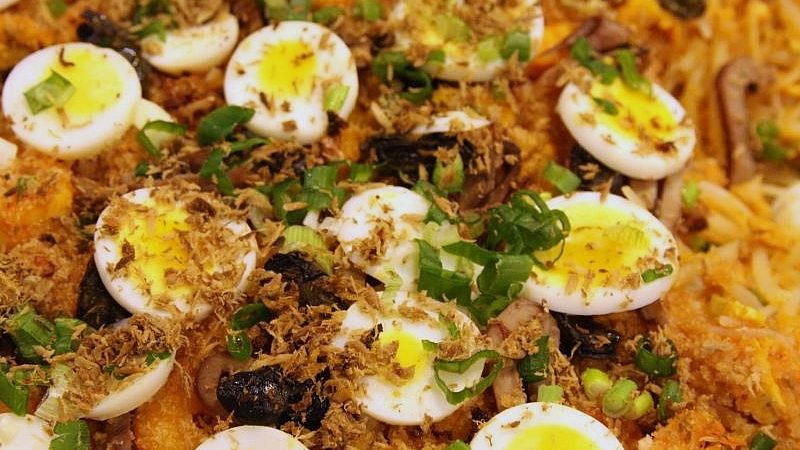The Long History of Long-Life Noodles
Coming from the Hokkien phrase “pian e sit” or “to have something conveniently cooked,” pancit was the equivalent of Filipino fast food during the Spanish occupation. Before restaurants became a craze, panciteros would sell takeout food to factory workers who were on their way home. Later on, when these same laborers started needing meals during lunchtime, Chinese food hawkers built panciterias for the working and the traveling.
Once pancit made its way into our palates, it started having cultural relevance at feasts and large gatherings—birthdays, fiestas, and family reunions. Old folks believed that you shouldn’t cut the noodles before consuming them, as this meant being gifted with a long life.
As the dish made its way to the different regions of the country, pancit grew to have many iterations, names, and recipes.
The Various Forms of Pancit
Today, any form of pancit is expected during celebrations. Let’s take a look at how some regions used their local delicacies to produce and make pancit of their own.
Pancit Canton
Possibly one of the more popular versions of pancit, the noodles are made from wheat flour and are usually stir-fried with carrots, cabbage, and pod peas. When served to guests, it’s topped with squid, shelled shrimp, squid balls, kikiam, and sliced pork.
While it is named after a province in China called Guangdong (formerly known as Canton), it has no direct correlation with the province.
When cooking such a dish, vegetables are cut into thin, julienne strips to make sure these cook faster on the stove. Since the noodles cook fast, large woks are used to keep the ingredients from falling out. This prevents spills and makes sure that the noodles are not accidentally cut. If left overcooked, the vegetables might end up getting soggy.
Pancit Palabok
When we think of palabok, Jollibee is one of the first restaurants that come to mind. The rice noodles are lighter than the wheat noodles, making it a perfect midnight snack after a long day. While the annatto powder gives the sauce its orange hue, the smoked fish and shrimp offer a salty taste to the meal. Pork cracklings and egg slices are added later on for a more interesting texture.
Modern iterations of the dish include bacon fat when frying the pork cracklings and garlic, giving off a more nuanced flavor.
Pancit Bihon
Also using rice noodles or bihon, this is the lighter version of pancit canton. Cooked with cabbage, carrots, pea pods, and some pork in a few spoonfuls of soy sauce, this dish is often eaten as an afternoon snack or lunch even when there’s nothing to celebrate.
Because the noodles are light and are fried with lots of veggies, people can often eat large servings minus the guilt.
Pancit Batil Patong
A specialty of Tuguegarao (and one of my personal favorites), the name is the two distinct words that describe how eggs are used for this dish. Once the egg noodles are stir-fried with carabao meat, bean sprouts, and other vegetables, it’s topped with a fried egg (hence, “patong”). From there, it is served with egg-drop-carabao-meat-stock (thus, “batil” for the action of whisking the egg).
Locals usually mix the stock with the noodles, adding more flavor to the pancit or take hearty sips of it from time to time.
We’ve not even covered half of the pancit iterations and innovations that our fellow countrymen have come up with. Maybe when it’s time to have a bilao delivered to your place, you might want to get something you’ve never tried before.
Joyce Claravall | Contributing Editor
A lover of bacsilog, cheese, and hotpot, Joyce harbors a love for meaningful moments with good friends and good food. She believes in saving the best for last so the pizza crust always comes first.
